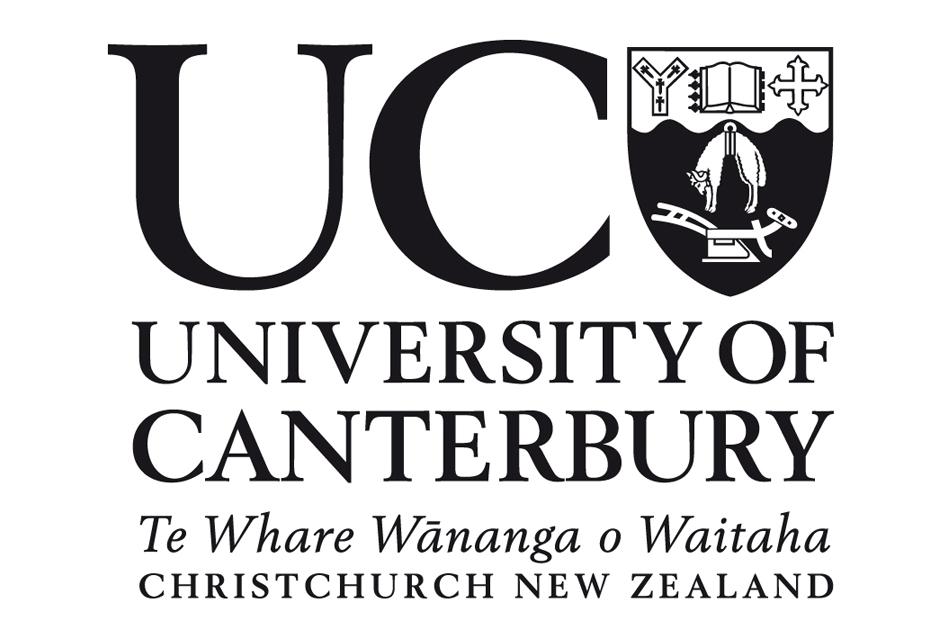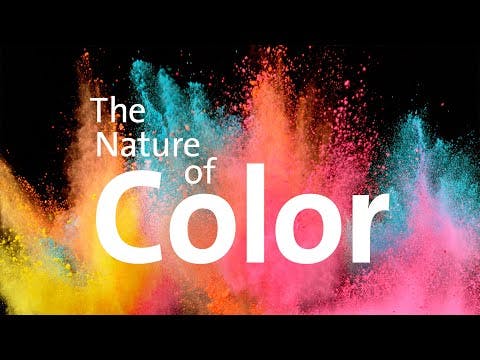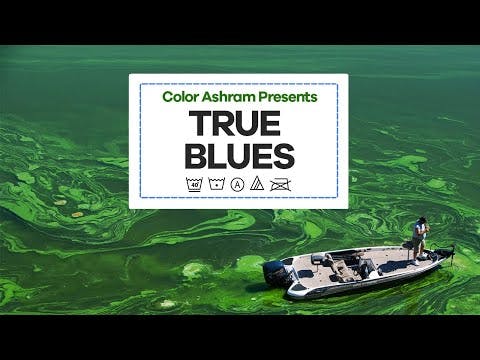- Skip to SectionOverview
- Lesson Preview
- Teaching Materials
- Feedback
- Extensions
- Background
- Standards
- Credits
- Overview
- Lesson Preview
- Teaching Materials
- Feedback
- Extensions
- Background
- Standards
- Credits
Click for more locales!
Colourful Solutions
Chemical Engineering Dyes to Brighten Lives

The Gist:
Students will learn to think like chemical engineers as they delve into the dye technologies that allow us to express ourselves through colourful clothing. They will read and discuss complex texts, analyse concept maps and graphs, and develop an appreciation for indigenous (Māori) dye technology.
Target Subject:
Years:
Estimated Time:
Target Subject:
ScienceYears:
9-13Estimated Time:


Subject breakdown by standard alignments
Driving Question(s):
How have different dye technologies been used to produce colorful clothing across cultures and over time?
Essential Question(s):
How can a career in chemical, genetic, or process engineering create opportunities to solve complex societal problems?
Hook(s):
- Part 1 begins with a warm-up “Dye-versity Audit,” In which students will quantify the number of dyes they brought to class on their person and reflect on what they mean in terms of self-expression. The rest of Part 1 focuses on narratives designed to appeal to students’ curiosity.
- Part 2 involves a card-based puzzle activity.
- Part 3 puts students directly in the decision-maker position, giving them an opportunity to choose a course of action based on their own values and reasoning.
Keywords:
chemical engineeringprocess engineeringdyeMāoriindigenous technologyRole of the Dye Readings
These narrative texts introduce students to the 3 dye technologies (ancient, Māori, and synthetic) that they will investigate.
The Nature of Colour at the American Museum of Natural History
Provides a broad appreciation of colour that sets the ground for our unit investigating dye technologies and why they are important.
Dye Technology "Cost Card" Puzzle Activity
Students will sort these cards into 3 correctly ordered processes. This builds an chemical/process engineering mindset.
True Blues: Textiles Water Pollution Problem
Supports student reflection and analysis as they perform a cost-benefit analysis of dye technologies to make a recommendation.
3 x 45 min
Available Grade Bands
Available Teaching Environments
Learning Objectives
Students will be able to...
Understand that chemical engineers develop economical commercial processes to convert raw material into useful products.
Understand the scientific and engineering methods.
Analyze complex texts describing historical and contemporary figures and synthesize information about dye processes.
Materials for
Presentation (Part 1)
Need: WiFi, Computer, Projector, Sound
"Role of the Dye" Readings (Part 1)
Print class set or 1 per student (your choice)
Student Worksheet (Part 1)
Print 1 Per Student
- For teachers guides, sign in with a free account!
Teacher Worksheet (Part 1)
Print 1
Steps & Flow
10 min: Warm-Up
10 min: Warm-Up
1.Clothing Colour Audit
Clothing Colour Audit
1.Clothing Colour Audit
Clothing Colour Audit
Use the presentation to walk students through an engagement hook activity, before moving into the main reading activity. Using worksheet 1, students calculate their "dye-versity index".
The "dye-versity index" represents the total number of colours a student has on them, and therefore the number of dye processes that had to be invented.
5 min: Engage
5 min: Engage
3.Watch Video
Watch Video
3.Watch Video
Watch Video
This video introduces the importance of colour in the natural world of plants, animals, and evolution, as well as in the human world of self-expression, social interaction, and culture. The importance of colour to life sets the stage to learn about dye technologies in the next step.
25 min: Explore
25 min: Explore
4.Introducing 3 Dye Technologies
Introducing 3 Dye Technologies
4.Introducing 3 Dye Technologies
Introducing 3 Dye Technologies
The lessons will focus on Tyrian Purple, Mauveine, and Tānekaha Dye.
The invention of each of technology enabled a group of people at a time and place the power of expression through colour!
5.Student "Experts"
Student "Experts"
5.Student "Experts"
Student "Experts"
Split students into groups of three (e.g. by counting off). Assign each number one of the three articles in Reading Handout 1.
After giving them time to read and fill out the concept map for their reading, instruct the groups of three to teach each other what they learned and help each other fill out the remaining blanks on Worksheet 1.
- synthesise: the process of running chemical reactions to obtain one or several products
- patent: a government license that keeps others from making, using, or selling an invention
- mass-market: cheap goods produced in large quantities to meet high demand
- niche market: goods designed to meet the specific needs of a smaller market (~10,000 units), such as clothes for children or sustainable cleaning supplies
- aniline: an organic compound with the formula C6H5NH2
- secretion: a process by which substances are produced and discharged from a cell, gland, or organ for a particular function in the organism or for excretion
- reducing agents: in chemistry, a reducing agent is a chemical molecule or atom that "donates" an electron to another chemical
- luxury market: expensive goods produced in small quantities because of cost and to maintain an exclusive status of the product
5 min: Wrapping Up
5 min: Wrapping Up
6.Have students finish remaining questions on their own or assign homework
Have students finish remaining questions on their own or assign homework
6.Have students finish remaining questions on their own or assign homework
Have students finish remaining questions on their own or assign homework
Part 2 will begin with a review of each dye technology, so students should complete their Part 1 worksheet before then.
Going Further
Ideas and resources for deepening learning on this topic.
Learn more about Rangi Te Kanawa
Our featured Māori dye expert comes from a famous family in Aotearoa. Have students learn more about how Rangi, her mother, and grandmother helped preserve Māori traditional weaving practices.
Learning Objectives
Students will be able to...
Understand that chemical engineers develop economical commercial processes to convert raw material into useful products.
Compare and contrast the costs and benefits of synthetic vs natural dye production.
Understand the scientific and engineering methods.
Solve a STEM puzzle by logically piecing together the order of 3 different dye processes.
Materials for
Cost Cards for Activity (Part 2)
Presentation (Part 2)
Need: WiFi, Computer, Projector, Sound
Student Worksheet (Part 2)
Print 1 Per Student
- For teachers guides, sign in with a free account!
Teacher Worksheet (Part 2)
Print 1
Steps & Flow
15 min: Review
15 min: Review
2.What is the difference between a chemist and a chemical engineer?
What is the difference between a chemist and a chemical engineer?
2.What is the difference between a chemist and a chemical engineer?
What is the difference between a chemist and a chemical engineer?
Encourage students to do their best to distinguish the differences between a chemist and a chemical engineer.
Use Presentation to transition from the discovery and invention of dye technologies to the activity and discussion about how inventions become viable products.
5 min: Pivot
5 min: Pivot
3.Become a chemical engineer for a day
Become a chemical engineer for a day
3.Become a chemical engineer for a day
Become a chemical engineer for a day
Paint the picture: Galactic Tees is a new company that wants to make a new line of t-shirts but can't decide on what dye technology to use.
Students will study the pros and cons of each dyeing technology at different scales. For the "Cost Cards" activity the Driving Question will be: "How much does it cost to produce the first dyed item using each technology?"
15 min: Activity: Process Engineering Puzzle
15 min: Activity: Process Engineering Puzzle
4.Activity instructions
Activity instructions
4.Activity instructions
Activity instructions
Divide students into groups of 2-3 and give each group a set of: ➚ Dye Technology "Cost Card" Puzzle Activity
Each set has 18 Cost Cards representing 6 steps in each of the three dyeing technologies. The presentation will break the activity into substages and guide the students through an analysis of the processes.
5.Find the Starting Price
Find the Starting Price
5.Find the Starting Price
Find the Starting Price
Once the cards students have sorted the cards, have them add up the prices of each step listed on the Cost Cards to find the Total Cost of the process.
Starting Price = Total Cost X 1.2 (to include a 20% profit)
10 min: Reflecting on Process Costs
10 min: Reflecting on Process Costs
6.Independent Work
Independent Work
6.Independent Work
Independent Work
Have students use the remaining time to finish the worksheet.
Students will reflect on the major expenses of the process and predict how the price per item might change as the scale of production increases. Part 3 will explore how production costs change at different scales, so these questions prime the students to think beyond the Starting Price.
Learning Objectives
Students will be able to...
Understand that chemical engineers develop economical commercial processes to convert raw material into useful products.
Interpret graphs to design a product solution at an appropriate scale.
Understand the scientific and engineering methods.
Assess the tradeoffs in scalability, cost, sustainability, and cultural significance between Māori dye technology compared to modern petroleum-based synthetic dyes.
Materials for
Presentation (Part 3)
Need: WiFi, Computer, Projector, Sound
Student Worksheet (Part 3)
Print 1 Per Student
- For teachers guides, sign in with a free account!
Teacher Worksheet (Part 3)
Print 1
Steps & Flow
10 min: Review
10 min: Review
20 min: Explain
20 min: Explain
2.Introducing Price Curves
Introducing Price Curves
2.Introducing Price Curves
Introducing Price Curves
The presentation introduces the idea of producing items at various scales and discusses how the price per unit changes accordingly.
Make sure students complete corresponding worksheet sections to follow the discussion of Price Curves.
3.Limited Resources
Limited Resources
3.Limited Resources
Limited Resources
Use presentation to guide students through the example of fishing for Murex snails illustrates how the availability of resources affects (and limits) the scale of production.
4.Watch Video
Watch Video
4.Watch Video
Watch Video
Show ▶ True Blues: Textiles Water Pollution Problem to introduce environmental impacts of synthetic dyes made from fossil fuels.
Throughout the presentation, synthetic dyes produced from fossil fuels are shown to be a competitive and attractive dye technology. Despite their range of colours and low costs, dyes produced from fossil fuels also cause a lot of problems.
In this video students learn about the many sustainability issues tied to the dye and fashion industries (particularly with fossil-fuel-derived synthetic dyes). This prepares students to reflect on and analyze the consequences of dye technologies as they perform a cost-benefit analysis of the available dye technologies to make a recommendation for Galactic Tees.
15 min: Synthesise and Reflect
15 min: Synthesise and Reflect
5.Have students finish worksheet independently
Have students finish worksheet independently
5.Have students finish worksheet independently
Have students finish worksheet independently
By interpreting the price curves, compiling information from all three lessons, and reflecting on their values and goals, students recommend a dye technology for Galactic Tees to use in their new line of t-shirts.
A table in the worksheet allows students to compare the range of colours, price point, target audience, sustainability, status signalling, and cultural significance of each dye technology. Based on the compiled information they will identify the most competitive dye technology. Their final recommendation for Galactic Tees's dye technology is supported by the production bottom line, but also by the student's personal priorities (e.g. sustainability or cultural significance).
Each of these technologies has pros and cons, so students are encouraged to reflect on how they could improve their chosen dye technology's disadvantages. Specifically they are tasked with imagining themselves as chemical engineers trying to make Galactic Tees more sustainable.
- mass market: goods produced in large quantities (1,000,000+ units) to meet high demand and sold at a low cost to a broad group.
- niche market: goods designed to meet the specific needs of a smaller market (~10,000 units), such as clothes for children or sustainable cleaning products.
- luxury market: expensive goods produced in small quantities (<1,000 units) because of cost and to maintain exclusive status of the product.
Materials for
- For teachers guides, sign in with a free account!
Assessment (TEACHER)
Printable assessment
Assessment (STUDENT)
Printable assessment
Please let us know how it went with your class!
We want to know what you (and/or your students) think!
Share your feedback in < 5 min with these forms:
- Have students read and discuss the scientific paper about dye technologies in the Background Section . This paper is co-authored by Māori weaving expert and conservator Rangi Te Kanawa, PhD.
- Teach the Black is Back lesson centred on Rangi’s conservatory work restoring Māori garments that were dyed using a different technology.
- Have students research the significance of the pepeha in Māori culture. They can create their own using this great online tool.
- Ask students to research chemical engineering, process engineering, chemistry, and related careers to find out median salary, school requirements, etc. A great resource is the NZ Careers Website.
- Have students watch this video about bioengineering dyes and conduct independent research. For example, they could find a company developing sustainable dyes and make a presentation about why this company deserves investment, compared to others.
- Have students research Rangi Te Kanawa, her mother Diggeress, and grandmother Rangimārie, and to reflect on the significance of preserving indigenous technologies.
Māori Culture
For those unfamiliar with Māori culture and language, here are some helpful links.
- Written Māori pronunciation guide and Video of Māori vowel pronunciation
- Māori dictionary
- Māori history Wikipedia entry
Scientific Background
This lesson helps build a high-level understanding of the different processes behind 3 dye technologies: 2 derived from natural resources (tānekaha red and Tyrian purple) and 1 derived from fossil fuels (mauveine). You and your students can gain more detailed knowledge by reading this scientific paper, coauthored by Rangi Te Kanawa.

Further Reading:
- Middle East Eye | “Smelly Snails and deep purple: This ancient dye costs $2,700 per gram”
- Pangaia | “Dyes and the Dyeing Process: a marketing blog about clothing company Pangaia’s search for sustainable dyes. Have students read and discuss this blog with a critical eye.
- Science History | “Fit to Be Dyed: The enduring appeal of tie-dye”
Target Standard(s)
Dimension:Geometry and Measurement
How does the lesson address this standard?
Students will synthesize multiple sources of information stemming from: a complex graph of how the unit price of 3 dye technologies scales with production; group discussions; and consideration of different pros and cons for each technology.
Dimension:Listening, Reading, and Viewing
How does the lesson address this standard?
Students will become experts in one of the 3 dye technologies covered by reading a complex text. They will then use their understanding to fill out a concept map of inputs and outputs for the technology involved.
How does the lesson address this standard?
Students will work together with group members to fill out all 3 concept maps, each based on a different complex text based on a dye technology (Tyrian Purple, Tānekaha Red, and Mauveine)
Dimension:Material World
How does the lesson address this standard?
In Part 3, students will perform a detailed cost/benefit analysis of 3 dye technologies, based on the cost, scalability, sustainability, and cultural significance. Two dyes are naturally-derived; one is synthesized from fossil fuels.
Connected Standard(s)
Dimension:Geometry and Measurement
How does the lesson address this standard?
Students will interpret curves on a complex graph of how the unit price of 3 dye technologies scales with production to inform a detailed cost/benefit analysis.
Dimension:Listening, Reading, and Viewing
How does the lesson address this standard?
Students will become experts in one of the 3 dye technologies covered by reading a complex text. They will then use their understanding to fill out a concept map of inputs and outputs for the technology involved.
How does the lesson address this standard?
Students will work together with group members to fill out all 3 concept maps, each based on a different complex text based on a dye technology (Tyrian Purple, Tānekaha Red, and Mauveine)
Dimension:Nature of Science
How does the lesson address this standard?
Students will work together with group members to fill out 3 concept maps showing the inputs and outputs of each dye technology: Tyrian Purple, Tānekaha Red, and Mauveine. They will also participate in class discussions and individual reflection based on this group work.
How does the lesson address this standard?
In Part 3, students will perform a detailed cost/benefit analysis of 3 dye technologies, based on the cost, scalability, sustainability, and cultural significance. They will make a recommendation for which dye to use, based on this analysis.
How does the lesson address this standard?
Throughout the lesson, students will learn about different technologies (developed beginning 4,000 years ago) have impacted different societies, and how our growing understanding of chemical processes has increased access to dyes (and colourful fabrics), while causing other environmental and cultural challenges.
How does the lesson address this standard?
Students will incorporate new vocabulary associated with dye technologies and analyze complex graphs.
How does the lesson address this standard?
In Part 3, students will perform a detailed cost/benefit analysis of 3 dye technologies, based on the cost, scalability, sustainability, and cultural significance. They will make a recommendation for which dye to use, based on this analysis.
Dimension:Material World
How does the lesson address this standard?
In Part 3, students will perform a detailed cost/benefit analysis of 3 dye technologies, based on the cost, scalability, sustainability, and cultural significance. Two dyes are naturally-derived; one is synthesized from fossil fuels.
Lesson Author and Creative Director:
Lesson Author and Graphic Design Consultant:
Education Consultant:
Sponsor and Producer
Please sign up for our mailing list to hear what’s coming up next!




